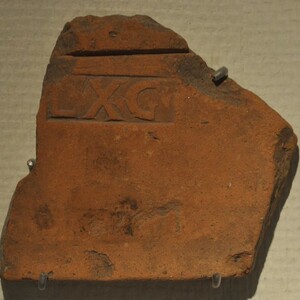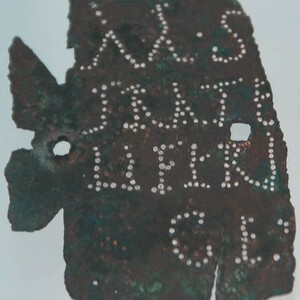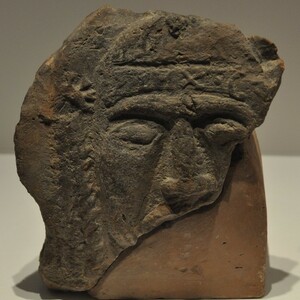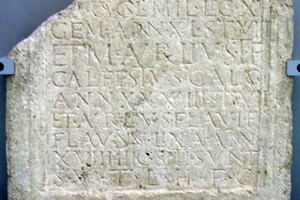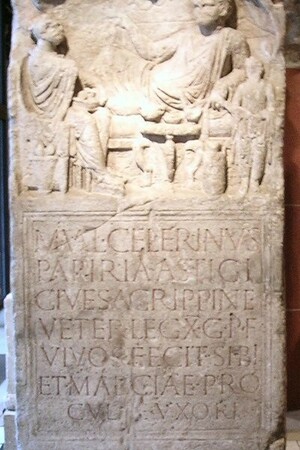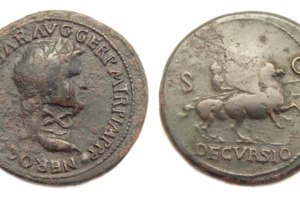Roman Legion - Legio X Gemina
Legio X Gemina (Tenth Twin Legion) was a Roman legion formed in 58 BCE by Gaius Julius Caesar for his upcoming war in Gaul. The Tenth Twin Legion is considered one of the oldest legions of the Roman Republic and later the Roman Empire.
Title: Legio X Gemina (The Tenth Twin Legion). Later known as Equestris.
Dates of existence: 58 BCE – early 5th century CE.
Logo: Bull
Nicknames: Equestris, Pia VI Fidelis VI, Domitiana, Antoniniana, Gordiana, Deciana, Floriana, Cariniana, Maximiniana.
Battle Path
- The Tenth Twin Legion was formed in 58 BCE by Gaius Julius Caesar for his upcoming war in Gaul. The baptism of fire for the legionaries of Legio X Gemina was the Battle of the Sabis (modern Sambre River in the current territories of France and Belgium) in 57 BCE. In this battle, Gaius Julius Caesar defeated the superior forces of the Nervii (one of the Belgic tribes).
- In 55 BCE, Legio X Gemina participated in Caesar's expedition to Britain.
- In 52 BCE, Legio X Gemina fought against Vercingetorix and took part in the siege of Gergovia (modern Clermont-Ferrand).
- In the civil war between Caesar and Pompey, Legio X Gemina sided with Caesar and participated in several key battles: the Battle of Ilerda in the summer of 49 BCE, the Battle of Dyrrhachium in the spring of 48 BCE, the Battle of Pharsalus in August 48 BCE, and the Battle of Munda in March 45 BCE.
- Legio X Gemina received the cognomen Equestris ("cavalry") because its soldiers often fought mounted.
- After the end of the Civil War between Caesar and Pompey, in which Caesar emerged victorious, the veterans of Legio X Gemina were granted lands in the vicinity of Narbonensis (modern Narbonne, France) in southern Gaul.
- After the assassination of Gaius Julius Caesar in 44 BCE and the subsequent civil war between Caesar's supporters and his assassins, Marcus Lepidus reformed Legio X Gemina in the winter of 44/43 BCE with the cognomen Equestris.
- The reformed Legio X Equestris took part in the Battle of Philippi in Macedonia in 42 BCE on the victorious Caesarian side. After the victory, the veterans settled in Cremona in northern Italy.
- Following the conclusion of the war with Caesar's assassins and the division of spheres of influence, Legio X Equestris remained in the army of Mark Antony and accompanied him to the East.
- In the East, Legio X Equestris participated in Mark Antony's campaigns against Parthia and his invasion of Armenia in 36-34 BCE.
- In 31 BCE, Legio X Equestris fought for Mark Antony at the Battle of Actium. However, Antony lost the war for power and perished, and Legio X Gemina recognized Octavian.
- Octavian settled the veterans of Legio X Equestris in Patras (modern Patras, Greece). However, a mutiny occurred in the camp, which was suppressed. Legio X Gemina was stripped of the cognomen Equestris, and loyal legionaries to Octavian from Legio X Gemina were combined with others from different parts to create a new legion named Legio X Gemina ("Twins").
- Afterward, Octavian directed Legio X Gemina to Petavonium (modern Rosinos de Vidriales, Spain) in Tarraconensis, Spain.
- Legio X Gemina took part in Emperor Augustus's campaigns against the Cantabrians (Cantabrian Wars), which lasted from 25 to 13 BCE and were aimed at making the ocean the empire's border, thus capturing the entire Iberian Peninsula under Roman control.
- Legionaries of Legio X Gemina were among the first settlers of Mérida, Córdoba, and Zaragoza in Spain
- Until 63 CE, the legion remained in Spain, after which it was transferred to replace Legio XV Apollinaris, which left with Corbulo for the war against Parthia, in Carnuntum (modern Petronell-Carnuntum, Austria) in Pannonia, slightly east of modern Vienna.
- The legion stayed in Pannonia until 68 CE, when the new emperor Galba temporarily transferred it back to Spain. However, by 70 CE, the new emperor Vespasian directed Legio X Gemina as part of Quintus Petillius Cerialis's army to suppress the Batavian rebellion on the Rhine (Germany).
- Upon arrival in Lower Germany, the legionaries of Legio X Gemina were forced to defend their winter quarters in Arenacum (modern Arnhem, Netherlands) from the rebels and succeeded.
- Later, Legio X Gemina moved its camp east of Noviomagus (Nijmegen, Netherlands) to the top of the Hunerberg hill to guard the captured Batavians. This camp is partially excavated today, as is the rural estate De Holdeurn near Nijmegen, which once housed a major tile and pottery production center for the Roman army and Legio X Gemina in particular.
- Legionaries of Legio X Gemina also worked in a quarry in the Moselle Valley, far beyond the borders of Lower Germany.
- In 89 CE, when the governor of Upper Germany, Lucius Antonius Saturninus, raised a rebellion against Emperor Domitian, Legio X Gemina sided with the emperor, who rewarded it with the title Pia Fidelis Domitiana ("Loyal and Faithful to Domitian"). The last part of this honorary title was dropped when this emperor was assassinated in 96 CE.
- At the end of the 1st century CE, while stationed in Cologne on the orders of the new emperor Trajan (98-117 CE), Legio X Gemina rebuilt several forts and constructed a dam along the Rhine River in 99-100 CE.
In 103 CE, the legion was transferred to Aquincum (modern Budapest, Hungary), and in 114 CE, it was moved again to Vindobona (modern Vienna, Austria) to defend the Danube border.
During Emperor Hadrian's reign in 132 CE, a large vexillation of Legio X Gemina was sent to participate in the suppression of the Bar-Kochba revolt in Judea.
During Emperor Antoninus Pius's reign, a vexillation of Legio X Gemina took part in his campaign in Mauretania.
During Emperor Marcus Aurelius's reign, Legio X Gemina fought against the ancient Germanic tribe of the Quadi, related to the Suevi tribe. Emperor Marcus Aurelius died of plague in Vindobona at the base of Legio X Gemina in 180 CE.
In the civil war that began in 193 CE (Year of the Five Emperors), following the assassination of Emperor Pertinax, Legio X Gemina supported the governor of Upper Pannonia, Lucius Septimius Severus. Also, during Severus's reign, several legionaries from Legio X Gemina were transferred from the legion to the imperial guard in Rome.
In the 3rd century, several Roman emperors: Caracalla or Elagabalus, Gordian III, Decius, Florian, and Carinus awarded Legio X Gemina honorary nicknames for its participation in the Germanic Wars and the war against the Sassanids. The full title of Legio X Gemina now read: Legio X Gemina Pia Fidelis Antoniniana, Maximiniana, Gordiana, Deciana, Floriana, Cariniana.
The last known records of Legio X Gemina date to the early 5th century when it was still stationed in Vindobona (modern Vienna, Austria) and likely ceased to exist afterward.
Sestertius of Emperor Nero with the mark of Legio X Gemina. 1st century CE.
Related topics
List of Roman Legions, Legion, Legionnaire, Roman Republic, The Roman Empire, Gaius Julius Caesar, Octavian Augustus, Legio XV Apollinaris
Literature
1. J. Gomez-Pantoja, "Legio X Gemini", in: Yann Le Boek, Les legions de Rome sous le Haut-Empire (2000, Lyon) 169-190
2. JK Haalebos, «Römische Truppen in Nijmegen», в: Yann Le Bohec, Les legions de Rome sous le Haut-Empire (2000 Lyon) 465-489
3. MCJ Miller, " Legio Decima Equitata. The Tenth Legion after Caesar and the Colonists of Patras", in Ancient World 2 (1979) 139-144
4. A. Morillo Cerdan and V. Garcia Marcos, "New evidence of the legions VI Victrix y X Gemina en la region septentrional de la península Ibérica", in: Yann Le Bohec, Les legions de Rome sous le Haut-Empire (2000, Lyon)) 589-607
5. I. Piso, "Legions in the province of Dasi", in: Yann Le Bohec, Roman Legions in the Upper Empire (2000, Lyon) 205-225.
6. Stephen Dando-Collins: Legions of Rome. The complete history of all legions of the Roman Empire, Moscow, Tsentrpoligraf Publ., 2017.

